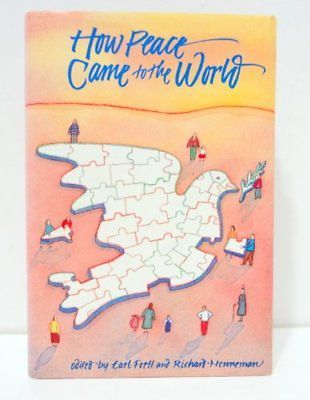Rendered at 01:36:16 04/28/25
How Peace Came to the World Foell, Earl W.; Nenneman, Richard A. and Waldheim,
Ships from
United States

Shipping options
Seller handling time is 1 business day Details
No shipping price specified to GB
Ships from
United States

Offer policy
OBO - Seller accepts offers on this item.
Details
Return policy
Full refund available within 30 days
Purchase protection
Payment options
PayPal accepted
PayPal Credit accepted
Venmo accepted
PayPal, MasterCard, Visa, Discover, and American Express accepted
Maestro accepted
Amazon Pay accepted
Nuvei accepted
Shipping options
Seller handling time is 1 business day Details
No shipping price specified to GB
Ships from
United States

Offer policy
OBO - Seller accepts offers on this item.
Details
Return policy
Full refund available within 30 days
Purchase protection
Payment options
PayPal accepted
PayPal Credit accepted
Venmo accepted
PayPal, MasterCard, Visa, Discover, and American Express accepted
Maestro accepted
Amazon Pay accepted
Nuvei accepted
Item traits
| Category: | |
|---|---|
| Quantity Available: |
Only one in stock, order soon |
| Condition: |
Very Good |
| ISBN: |
9780262061001 |
| Author: |
Richard A. Nenneman |
| Book Title: |
How Peace Came to the WORLD |
| Language: |
English |
| Topic: |
Peace |
| Format: |
Hardcover |
| Publisher: |
MIT Press |
| Genre: |
Political Science |
| Publication Year: |
1985 |
| Features: |
Reprint |
| Item Weight: |
21.2 Oz |
| Number of Pages: |
272 Pages |
| Brand: |
The MIT Press |
| EAN: |
9780262061001 |
| UPC: |
9780262061001 |
| Seller Notes: |
Listing details
| Shipping discount: |
Free shipping on orders over $75.00 |
|---|---|
| Posted for sale: |
More than a week ago |
| Item number: |
562525156 |
Item description
Nothing threatens us today more than the 50,000 nuclear warheads that stand in a state of near readiness around the globe. Yet in the year 2010 the world is at peace and the threat of nuclear devastation has vanished.
How did this come about? Through the imaginative ideas of forty men and women - lawyers, doctors, professors, conflict research specialists - we see a wide variety of scenarios explaining how the world learned to prevent warfare.
Writing from the United States, Switzerland, Austria, and West Germany, the authors of these essays show that even in an imperfect world of practical politics, there are many paths to peace. They provide a wealth of original yet workable approaches to peace that are as varied as the people who long for it.
How can these amateurs fix up the world? By not accepting that war is inevitable, by forcing their leaders to take bold steps, and by becoming an informed citizenship. Their peace scenarios are grouped into several main approaches - awakening through disaster, playing the superpower game, flanking the superpowers, improving the machinery of peace, changes of consciousness, action groups, and citizen exchanges.
Most essays tackle the Soviet-American rivalry first, while others emphasize acts by nonsuperpowers. Some assign bold leadership roles to individuals like Congressman Jack Kemp and Secretary of Transportation Elizabeth Dole, or call for a change in consciousness about who is the enemy. Ronald Reagan makes an irresistible vehicle for surprise peace initiatives. Others use existing institutions, such as the Department of Defense, the League of Women Voters, or the United Nations, in strategies leading to peace.
Richard D. Lamm, Governor of Colorado, describes a nuclear exchange between India and Pakistan as the catalyst for peace - as horrified viewers witness a nuclear war on television, a tidal wave of peace moves through the world. Kenneth Boulding sees the 21st century ushering in a New Region of Time in which capitalist and communist nations agree to live and let live. And Randy Fritz of Smithville, Texas proposes an exchange of military observers at the highest levels. Taking his cue from game theory, he notes that cooperation is ultimately the most successful form of competitive human behavior.
All the essays were chosen from entries to "Peace 2010," a contest sponsored by The
Christian Science Monitor. Earl W. Foell, the Editor in Chief of the
Monitor and Richard A. Nenneman, the
Monitor's Managing Editor, have written introductions to each thematic chapter. In a concluding note, Lincoln Bloomfield, MIT professor and former national security council official, analyzes the essays and compares them to the work of peace professionals.
Binding: Hardcover
Features:
Great product!
Label: The MIT Press
Manufacturer: The MIT Press
Publication Date: 1985-11-27
Publisher: The MIT Press
Studio: The MIT Press
Added to your wish list!

- How Peace Came to the World Foell, Earl W.; Nenneman, Richard A. and Waldheim,
- 1 in stock
- Price negotiable
- Handling time 1 day.
- Returns/refunds accepted
Get an item reminder
We'll email you a link to your item now and follow up with a single reminder (if you'd like one). That's it! No spam, no hassle.
Already have an account?
Log in and add this item to your wish list.



